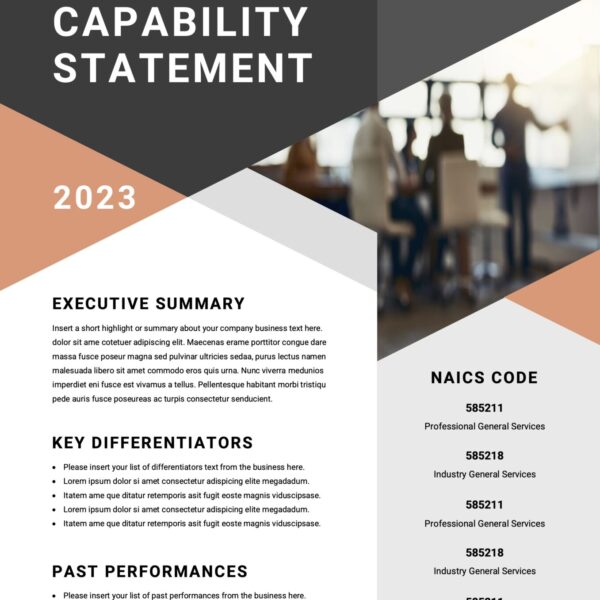 So you made the jump from a safe, warm, and cozy job to the freedom of freelancing. You’ve dreamt about it for so long, wondering how the sun feels during the day while you were locked away behind a fluorescent lit cubicle isles and rows from the nearest window. Well you’ve arrived; so now what? How are you going to pay your bills, grow your skills, and market your skills on a shoe-string budget? Keep reading…
So you made the jump from a safe, warm, and cozy job to the freedom of freelancing. You’ve dreamt about it for so long, wondering how the sun feels during the day while you were locked away behind a fluorescent lit cubicle isles and rows from the nearest window. Well you’ve arrived; so now what? How are you going to pay your bills, grow your skills, and market your skills on a shoe-string budget? Keep reading…
One of the more important characteristics of a successful is maintaining a steady flow of work. That work may come from agencies, current, or new clients. To me, each creative will find their own way to attain their own work but below are a few tips to try:
Online Agencies: These are good because most of the risk is on them so long as you hold up your end of the bargain. If you’re great at creating logos, but really don’t like to get into haggling and negotiating prices, these places are for you. You can create a profile, list your skills, and post your rate per hour or project. Then wait for the emails to come in. You’ll want to do some market research though so that you’re not too high or too low that you price yourself out of work or respect.
Network Locally: This one may be a step out of your comfort zone. Yes we have social media now a days and we can hide behind our keyboards, smart phones, and laptops but live networking still is held in high regard. Find out when and where other business professionals are hanging out after hours; then be there with them. Bring your business cards, but don’t pass them out like free tickets. Instead try making conversation first. Ask individuals what they do and repeat it back to them along with points of view while including their name here and there to show that you are paying attention to them. Before you know it, they’ll ask you for your card and then you can tell them about how awesome you are at design and how much fun you have helping people grow their business and brand.
- MeetUp.com
- Behance
- Your local chamber of commerce
- BNI.com
Sponsor a Community Event: Pro-bono may be a great way to start out especially if you’re skittish about how people may appreciate your work. It’s also great experience in dealing with customers. You’ll run into all kinds, and before long you’ll have favorites and you’ll have some you wish you never met. As a self-starter, your reputation is everything so doing a free design or website for a local church could win you a lot of “oooohhhs” and “ahhhhs” from the members who all work in the community. A few thank yous and nice words from some non-profit organizations that rub shoulders with city officials could propel you to great levels. So even though the money may not have been there, you’ll still have new material for your portfolio, highly visible clientele, and letters of recognition you can tout around like trophies.
Embrace Social Media: This one comes with a grain of salt. There are many outlets out there to use. Find two or three that you can really wrap your mind around and feel comfortable using – and use them! Post daily, post often, but keep in mind you’re looking to engage first. The selling of your skills will be evident enough in your bio. Use it to showcase new designs you created. Get people to rate or comment on your work or even offer opinions and feedback. Learn how to strike up good conversations that may provide some great insight to someone’s problem or project and that could land you a job right then and there or not long down the road since you sound like you know what you’re talking about.
Your Portfolio: Well after showing off and practicing your elevator speech, you must have a place for all these people to view your work and vet your skills. Even if you don’t want to set up a full-out 50 page website that has all types of forms, sub pages, and FAQ’s with endless breadcrumbs, you should still have an online presence. I’ve seen some really nice designer websites that were nothing more than full-width graphics stacked, scrolling, or animated with just a contact page with a phone number and 3 line form. Be versatile though with your displays so that businesses of most industries can envision you doing their work and not think you’re just a niche designer. Unless however you want to be tied to a specific industry. Nothing wrong with that. Let me also mention blogging. A great way to provide great tips on your trade that not only shows insight, but proves you are the authority on that subject matter.
Well for those of you who’ve been doing this for some time, why not offer some tips to others in the comments below.



Oh wow very interesting read and very useful at the same time.
I got currently a friend who left the job and went into Freelancing, this was his dream and he is a very good at it .. however, he is not good in managing time and projects … and well, now he is thinking to build a CV again and start applying for jobs again!!
I would really suggest for anyone to think twice, have some management sense or at least be with someone before starting or jumping into the world of freelance.
Great tips and ideas .. keep it going guys 🙂
Hey Zaid, thanks for commenting! Yes time management when you are no longer restricted to a punchclock can be dangerous. Sometimes I find myself drifting in thoughts, or struggling with a creative block. But you have to make each hour a productive one. Otherwise its a fast downward spiral past stress, through worry, to humbling yourself to calling your old boss for your job back at less pay. Yikes!
Great advice. Sounds a bit along the lines I’ve been thinking. I am building a local network here in Huntsville, AL, just got started on freelance.com, working on publishing my portfolio through WordPress, and even thinking a personal blog would be a great forum for creating buzz.
Thanks for commenting! Yes I actually love the capabilities and functionalities of WordPress, they’re are awesome. Let us know when you finish your portfolio. We can create a post and let our readers know about it and view it!